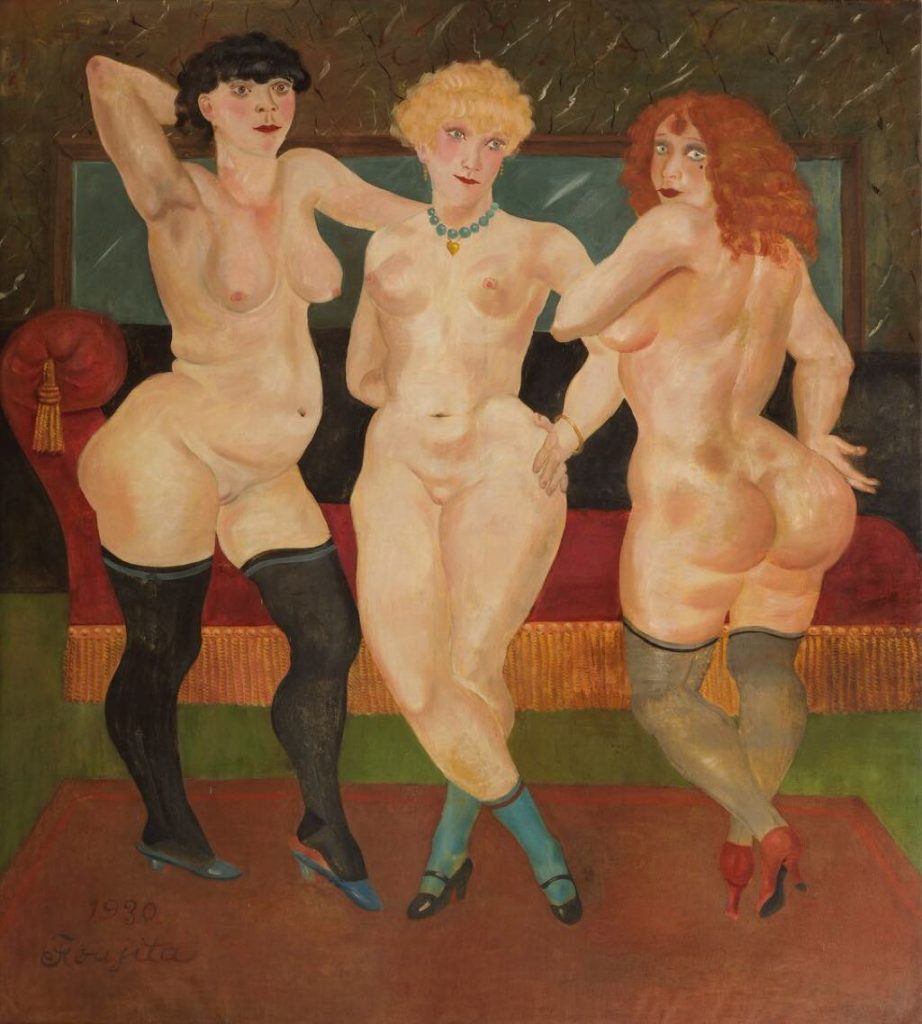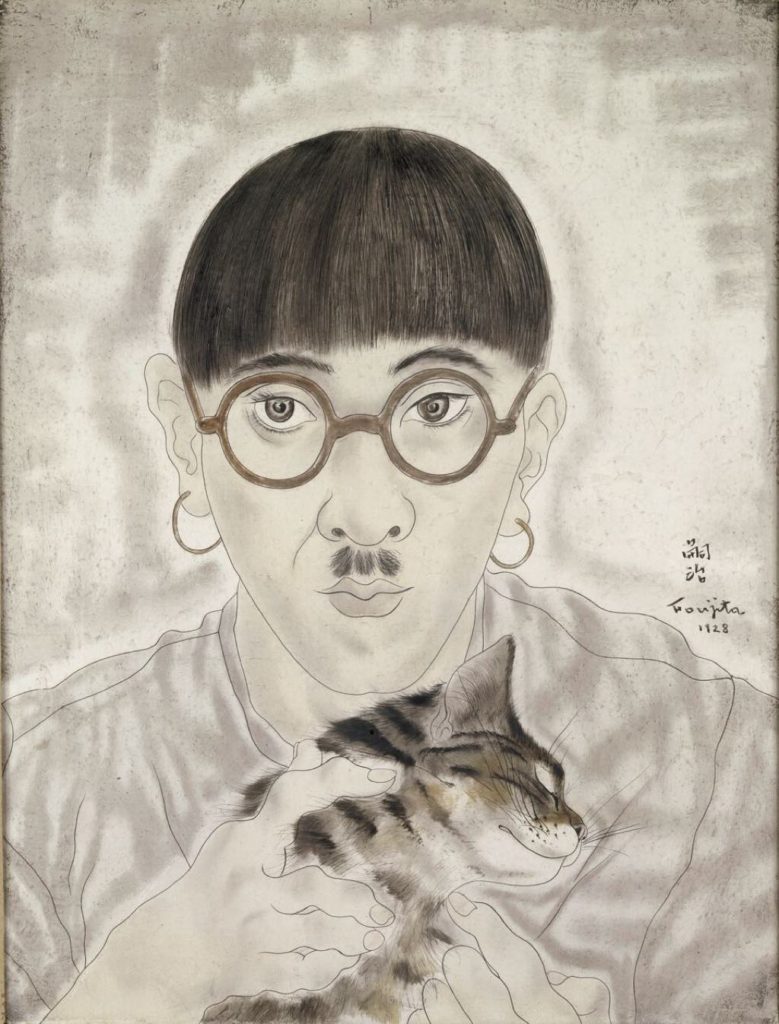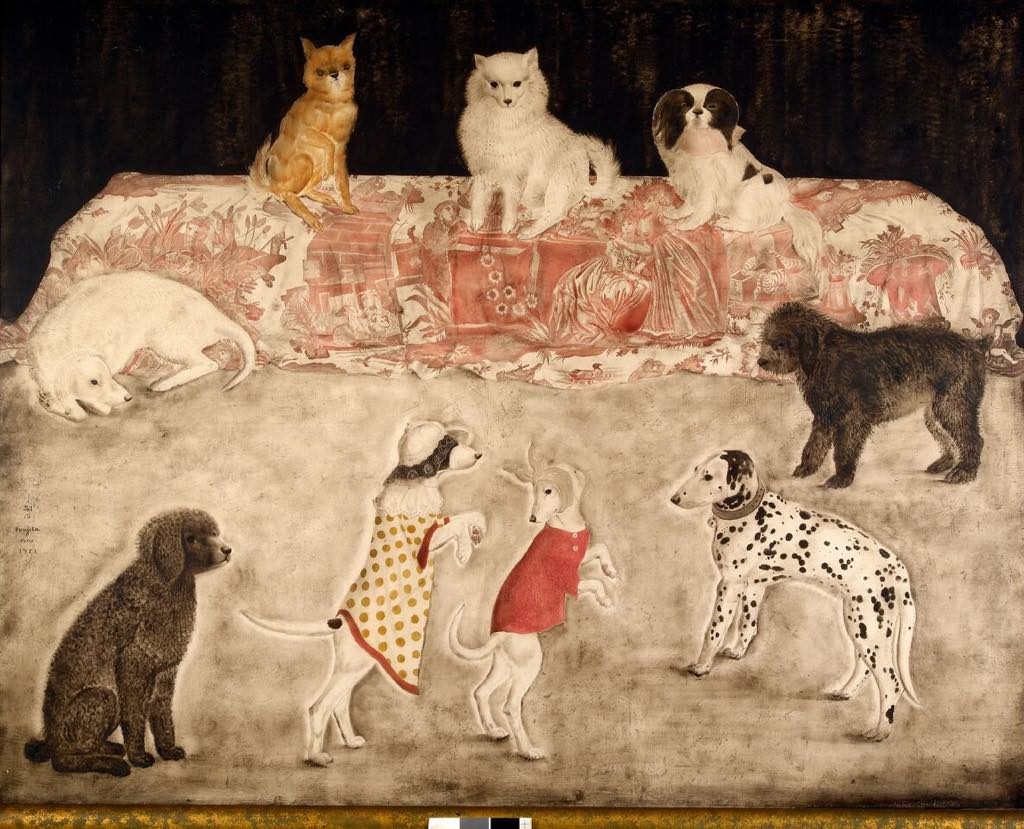
Léonard Tsuguharu Foujita (1886-1968), whose work is on show at the Musée Maillol in “Foujita: Painting in the Roaring Twenties,” seems to have led a charmed life. The son of a Japanese general, he was attracted at an early age to Western art and especially to France, where he first went to live in 1913. “It was predicted that I would be the best painter in Japan, but I dreamt of being the best painter in Paris,” he once wrote. “I had to go to the source of Parisian art.”
In Paris, he was almost immediately absorbed into the exhilarating Montparnasse art scene, very soon mingling with just about all of its stars – Picasso, Modigliani, Soutine, Léger, Gris and Matisse, among others –and even taking dancing lessons from Isadora Duncan. He studied the work of his Western colleagues and finally created his own style of modern art, incorporating elements of both Japanese and European art.
Success came easily to this prolific and multifaceted artist, in both his work and private life. Unlike many of the struggling artists around him, he soon began making good money and winning awards.

Foujita was quite the ladies’ man as well. By 1931, he was leaving his third wife and running off to South America with a new lover. His work was a great hit there, too, but a couple of years later he was back in Japan, where his propaganda work for the country’s military during World War II marred his reputation in many quarters. After returning to France to stay in 1950, he converted to Catholicism and adopted the first name Léonard (a tribute to Leonardo).

The exhibition focuses on the 1920s, when the artist was living the high life in Paris, as documented in the many photos and home movies on display, which show him disporting with his friends and partners. A great dandy, with his bowl cut, round glasses and earrings, he loved to pose for photos and often made self-portraits.
His work veers from looking like Japanese art influenced by Western art to Western art influenced by Japanese art, and sometimes like just one or the other. During World War I, he fell under the spell of the Douanier Rousseau, and the show includes some works from this period, but he was too sophisticated to pass himself off as a naïf.
One thing is sure: Foujita had great facility and charm as an artist, with a special talent for depicting animals: his cats are famous (if you happen to come across a first edition of his 1930 Book of Cats, you will be holding one of the most valuable books in the world).

In addition to the animals, I especially appreciated a group of still lifes, mostly watercolors, of humble everyday objects like spools of thread, scissors, buttons and pincushions. A couple of these works were transposed into marquetry tabletops, on show here, in collaboration with famed furniture designers André Groult and Jules Leleu.
There is something for everyone in the work of this chameleon of an artist. Those who want more can visit his last home and studio in France in Villiers-le-Bâcle, about an hour from Paris by car, which is open on the weekend, or take a trip to Reims to see the Foujita Chapel, designed and decorated by this artist who spanned two worlds.
Favorite